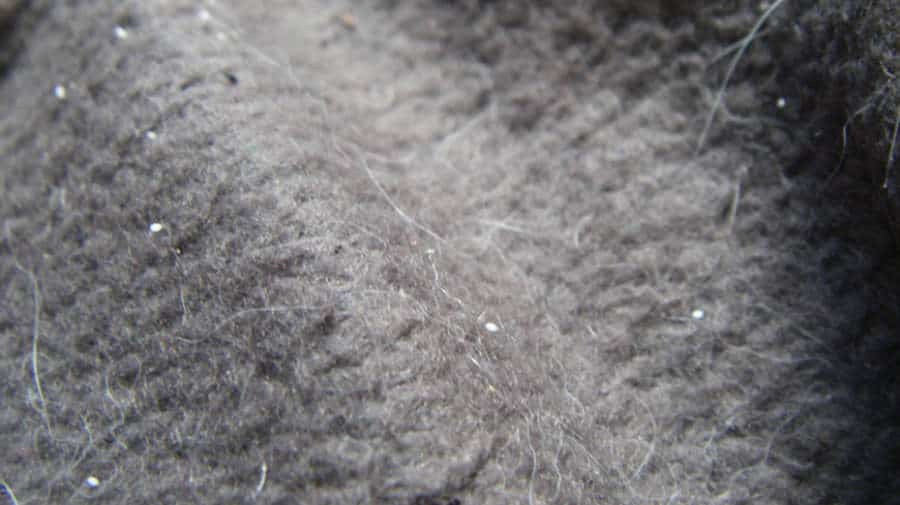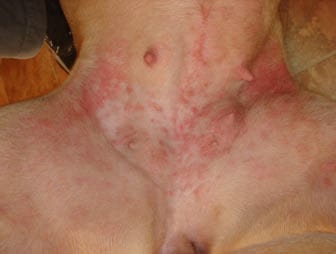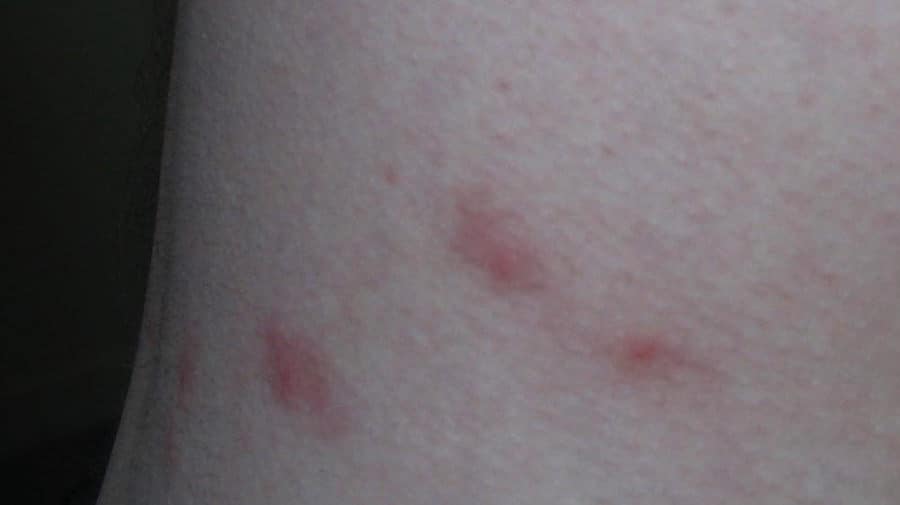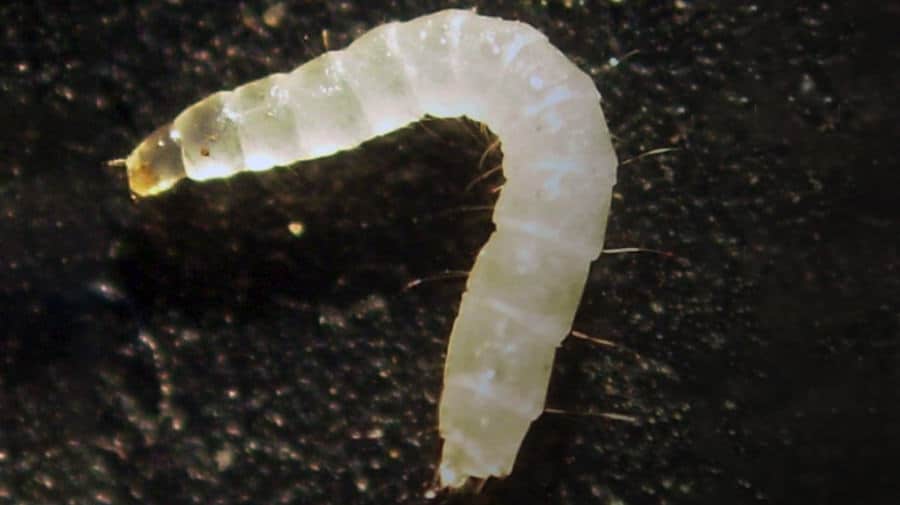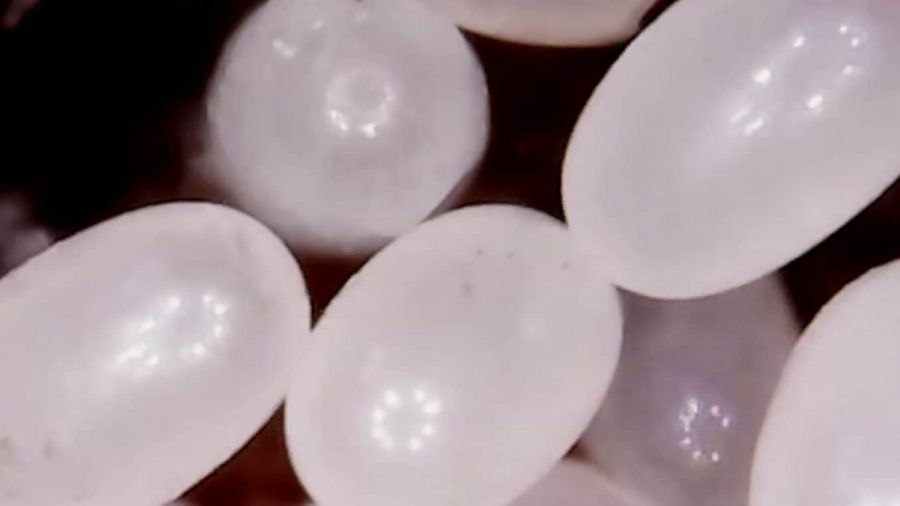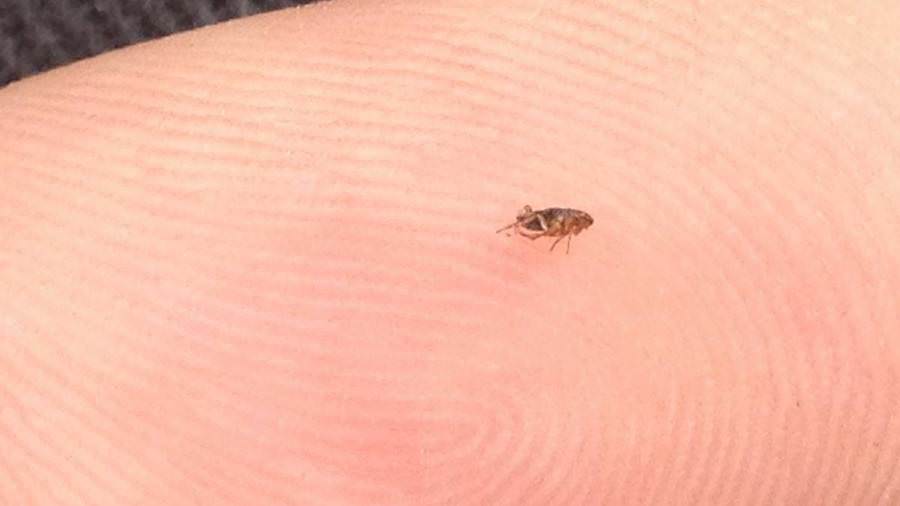Flea Larvae: A Complete Guide
Dealing with fleas can be tricky. Many people will treat the adult fleas only, not giving a second thought to what actually happens during a flea infestation. It won’t only affect your pet, it will also affect your whole house!
If one of your house pets has become the new host for a flea family, you might be dealing with a far worse underlying problem: flea larvae.
What Is Flea Larvae?
Flea larvae are “baby” fleas. The larvae are tiny, worm-like creatures that are no bigger than four to five millimeters in size when fully grown. They feed on flea droppings, which is made up of the host’s blood.
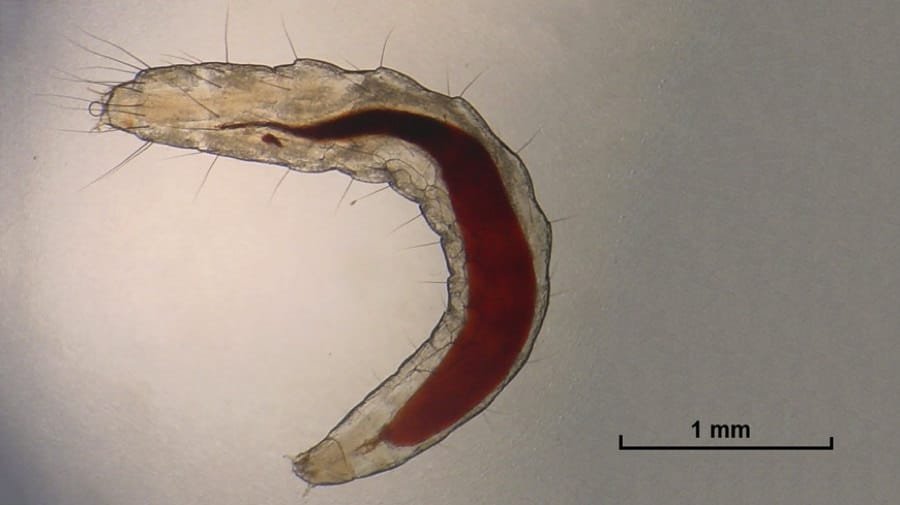
A flea’s life is made up of four stages:
- Egg to larva
- Larva to prepupae in a cocoon
- Pupae
- Pupae to adult flea
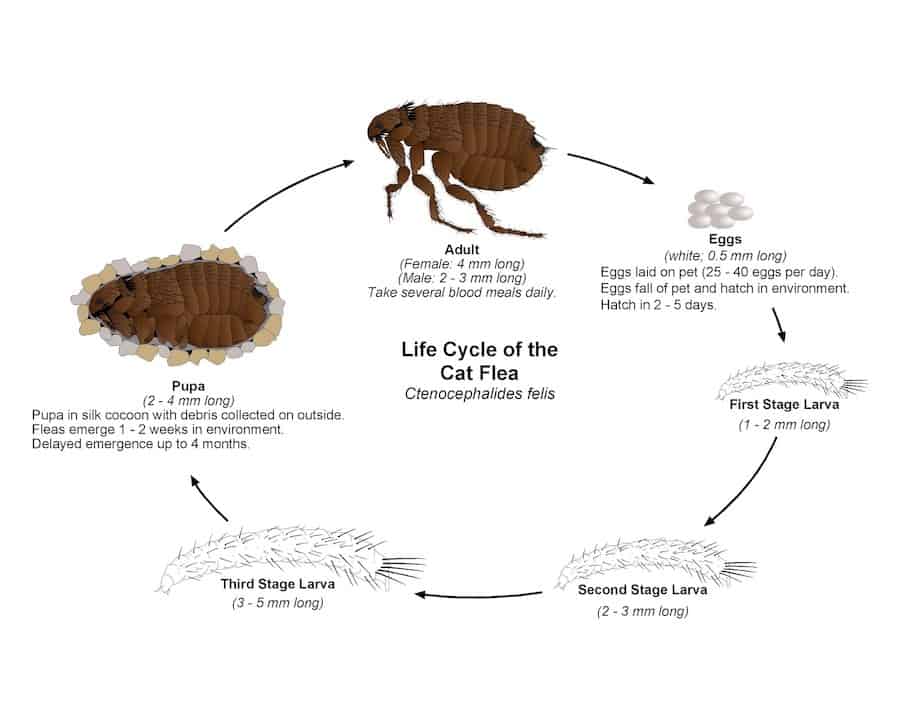
The flea larvae hatch from the eggs, which have been laid by the female flea. The female flea will most likely lay the eggs on the host, where she is feeding. Yet, this doesn’t mean that the eggs will stay there. A flea egg can’t hold on to anything, so when the host shakes or moves, the eggs will fly off.
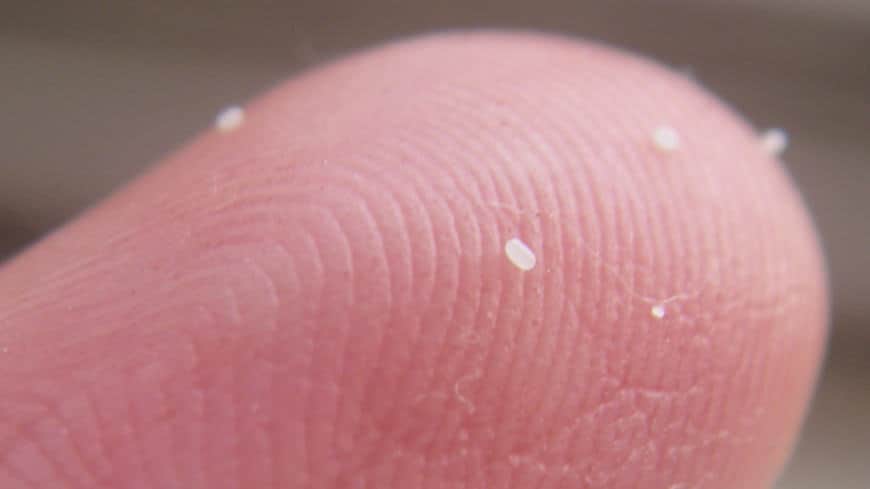
The eggs end up in and around the places where the host spends the most time; this will usually be the bedding the pet sleeps on. The eggs will stay there until the larvae are ready to hatch.
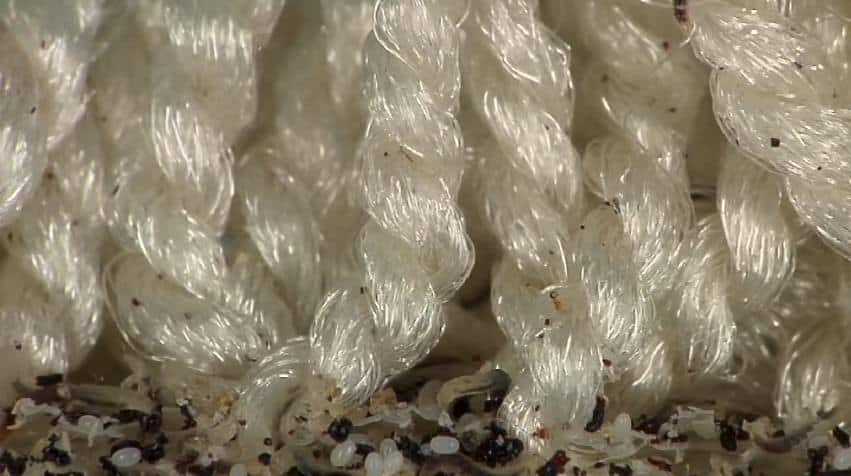
The larvae will hatch from the eggs anywhere between two days to a week later. This all depends on the environment. The fleas and their eggs prefer warm and humid temperatures, the moisture in the air is necessary for the eggs to hatch.
Once the larva is hatched, it will find a comfortable place to thrive, away from any light. Flea larvae are negatively phototactic. This means they avoid sunlight.
The larvae will then spend up to two weeks feeding and growing. The time depends on the supply of flea dirt, which the larvae feed on.
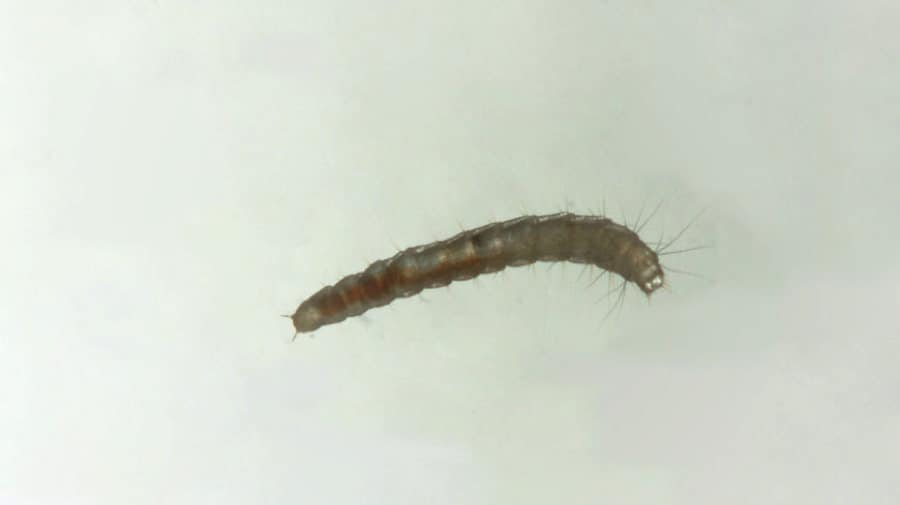
When the larva is big enough, it will spin itself into a cocoon. It does this by shaping itself into a U-shape. Once in the cocoon, it will begin transforming into a pupa.
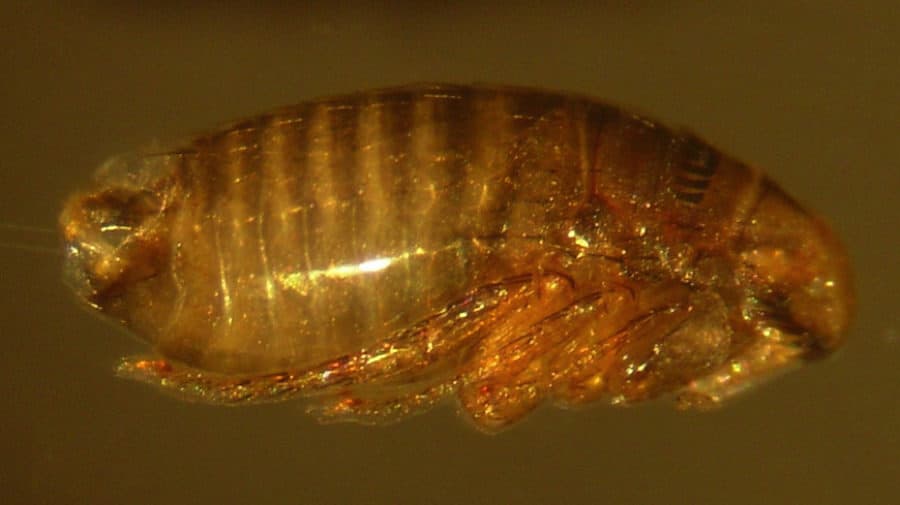
The pupa will then later emerge as an adult flea. The flea pupa can remain in the cocoon for a very long period of time. It has to be triggered, in order to emerge from the safety of the cocoon. This usually happens when it comes into contact with a new host.
Sometimes, people who have just moved into a new home will complain about fleas; this is because there may have been flea cocoons lying around, waiting for a new host.
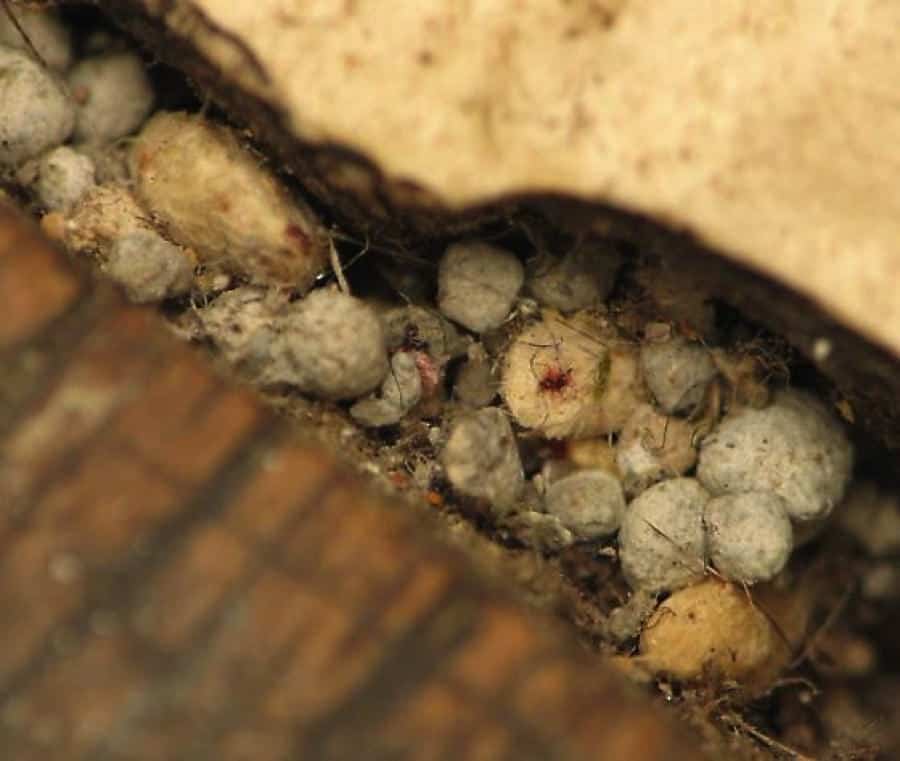
After the cocoon has been triggered, the adult flea will emerge. Once out of the cocoon, the adult flea will find a host and then begin to reproduce.
Adult fleas need warm weather to thrive. Once the cold temperatures of the winter come, they die. However, the eggs and cocoons can survive a tough winter. They are usually hidden away in small dark places, where the temperature is warmer. Once the weather heats up, the eggs will hatch and the cocoons will open up.
If the fleas and their eggs are exposed to extreme heat, they will also die.
What Do Flea Larvae Look Like?
Flea larva is a small worm-like creature, made up of 13 body segments. The larvae don’t have any legs. Instead, they have bristles that run along their body. Despite the fact that they have no legs, they move around quite fast. They move by contracting the different body segments.
Flea larvae are usually a white or off-white color. Once they feed, they become dark red, brown or purple around the belly area. A few veins running down the body will also be visible.
The larva is no more than four to five millimeters long when it’s fully grown, much longer than the size of an adult flea. Flea larvae have very strong heads. When they are newly hatched, their head will be larger than the body. A flea larva also has a strong spine running up into the head, which helps to break the egg when hatching, this disappears as the larva grows.
The larva doesn’t have eyes, but it has very strong mouthparts. The flea larva is very independent, it can move to a food source and feed itself. This is different from other larvae, which depend on the “adults” to bring the food.
As the larva grows, the head will become more proportional to the rest of the body. The head of the larvae is a yellow-brown color, distinctively different from the white translucent body.
What Do Flea Larvae Look like on Dogs & Cats?
Flea larvae usually spend more time away from the host. Since they are very sensitive to sunlight, they like to hide inside thick carpets or blankets, where the host sleeps. Here they will feed on the adult flea’s droppings until they are ready to make their cocoon.
If they are on the host, the flea larvae could be very difficult to distinguish. The larva is a milky-white translucent color. The most visible part of the larva is the gut, which is filled with dry blood.
How to Get Rid of Flea Larvae
Getting rid of the adult flea is one thing, but actually getting rid of the larvae and eggs is a lot more complicated. If one of your pets has been the host of a flea infestation, your whole house may be the hatching ground for a new round of flea larvae.
One important thing to do is vacuum the house thoroughly. The vacuum will suck up most of the larva, eggs, and cocoons that may be hiding in the small cracks and crevices of your home. After vacuuming, it is essential that you throw away the vacuum content as the vacuum will only suck the eggs and larvae up, it won’t kill them.
There are a number of different products available that will kill the larvae and get rid of eggs. Still, it is important to talk to your veterinarian before using any products. The vet will know you and your pet, and what will be best for your safety.
It may take several months before you see any improvements.
Washing the bedding where the pet sleeps is paramount when ridding your home of a flea infestation. Hot water and a mild detergent should get rid of most of the larvae and eggs.
Once you have freed your house and pets from fleas and larvae, you will have to figure out a way to prevent another infestation. If you have a large garden, it’s a good idea to close it off as much as possible, so that other animals from outside can’t enter. The fleas that normally live on dogs and cats, can also be found on other animals, such as: foxes, raccoons, skunks, coyotes, and cattle.
Keeping your pet away from potential flea sources is a good thing to do. Although, this can sometimes be difficult, especially if you live on a big farm or other places where there are a lot of animals and the area is difficult to close off completely. In this case, you should get preventatives for your pet. There are many different flea prevention methods, such as: sprays, dust, spot-on treatments and chewable tablets.
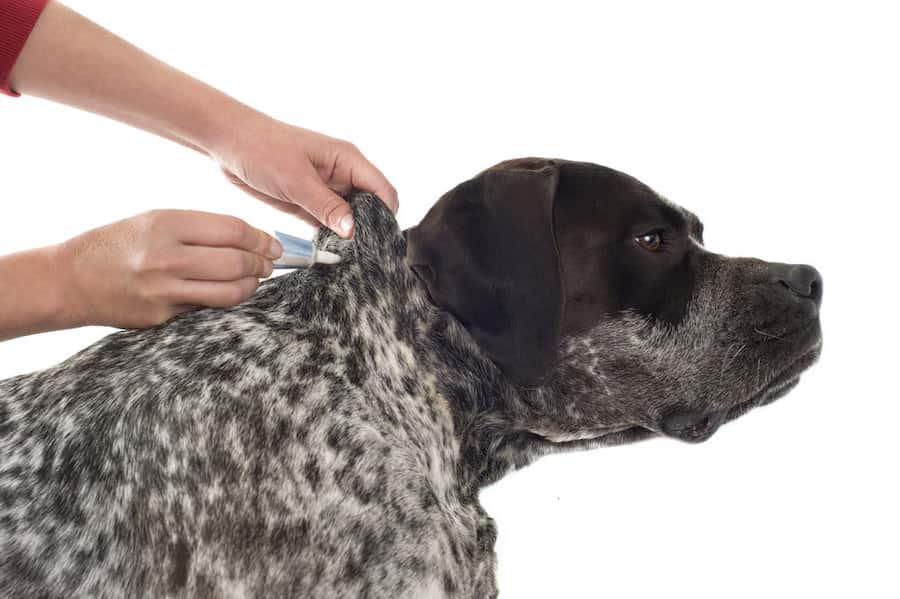
Most products will kill off the fleas and larvae living on your pet; others will prevent the fleas from producing eggs and kill the larvae. There are many different options, talk to your veterinarian and see what is recommended.
If you are looking to prevent flea attacks in the future, I recommend choosing a product that will have long-term effects. Those products work slower in killing the adult fleas, but they also stay in the pet’s system for longer.
Summary
Flea larvae are baby fleas. A flea larva is a small maggot made up of 13 sections. The larva has a white translucent color, with dark red guts showing from within.
The flea larvae will go through four stages while developing into adult fleas. When the larva is big enough, it will spin itself a cocoon where it will stay and grow into a pupa. The flea pupa can stay in the cocoon for several months until it is triggered by a new host.
Flea larvae can be difficult to see on dogs and cats, due to their translucent color. They usually don’t spend time on the host because they need to stay away from sunlight, as they are negatively phototactic.
Getting rid of flea larvae takes a lot of deep cleaning, with a few products that will kill the fleas and larvae. It is important to also put measures in place, in order to prevent any further infestations.

